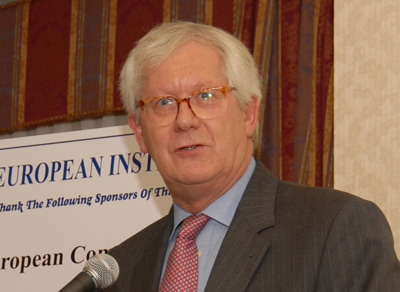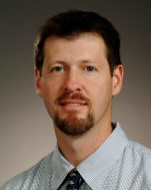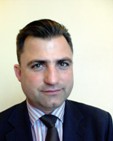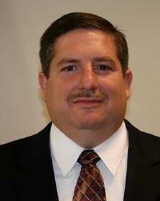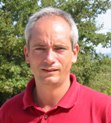Keynote lectures
Monday September 17, 2007 |
Science and Technology Opportunities for Unmanned Aerial Vehicles |
Dr. Virginia “Suzy” Young
|
Author :Dr. Young has over 28 years of experience as an Engineer, including 6 years experience in industry and 24 years working as a civilian for the U.S. Army. Dr. Young has a Bachelor of Science in Engineering from the University of Memphis, a Masters of Business Administration from Florida Technical Institute, a Masters of Science in Computer and Electrical Engineering from Vanderbilt University, and a PhD in Computer and Electrical Engineering from Vanderbilt University. She is a also a graduate of the Defense Systems Management College, Ft Belvoir, VA, Program Management Course, and has taught courses and seminar classes at numerous Universities. She is presently an Adjunct Professor in the Computer and Electrical Engineering Department at Vanderbilt University. Dr. Young’s industrial experience includes engineering and engineering management at General Telephone and Electronics (GTE), Triad MicroSystems, and as General Regional Manager for Textron Aerostructures. Her work in robotics and unmanned systems began in 1982 as an engineer for the U.S. Army Missile Command. As Program Manager for the first anti-armor robot, she successfully completed the initial development and test phases for the first military armed robot for the U.S. Army Infantry School, Ft Benning, GA. Presently, she serves as the Executive Director for Aviation Technology. Her leadership in this group includes managing basic, applied and development activities for all Army aviation platforms. Dr. Young has numerous commendations and over 20 published works. Dr. Young is considered a leader in the field of missile, aviation and unmanned systems and is recognized for her expertise in both national and international domains. |
Keynote subject :Efforts in Aviation Technology support many aspects of unmanned systems development. As the primary developmental activity (AMRDEC), specific science and technology efforts are identified that present a challenge to the effective operation of unmanned platforms for Army use. Unique opportunities exist that capitalize on teaming, payload integration, communications, navigation, and progressive development of autonomous |
Tuesday September 18, 2007 |
Unmanned Aircraft Systems (UAS): The Global Perspective |
Peter van Blyenburgh
|
Author :
Peter van Blyenburgh, a Dutch national residing in Paris, France, was born in The Netherlands, educated in Canada, The Netherlands Antilles and The Netherlands, studied in Switzerland (Business Administration) and has held various management positions in the USA, Europe and the Middle East. He has been involved with unmanned systems since 1987 and has supplied advisory services in this field to corporate and/or governmental entities in Europe, the Middle & Far East and North America. In 1995 he instigated, and in 1997 founded, the European Unmanned Vehicle Systems Association (EURO UVS), which changed its name to UVS International in January 2004; he is currently in his fifth two-year term as president of this internationally operating non-profit association. He personally chairs all UVS International conferences and he is a regular speaker at international unmanned system-related conferences. He is the editor and publisher of an authoritative yearly publication on UAS systems; the first edition (UAVs: A Vision of the Future) appeared in June 2003. The fifth edition (UAS: The Global Perspective) appears in June 2007 (hardcopy & electronic format). He was the coordinator of USEP, a pan-European inter-governmental initiative concerning UAS for security and environmental-related purposes, instigated & conducted by the Conseil Général de l’Armement, a French Ministry of Defence think-tank. He contributed to the creation of the EUROCAE Working Group 73 on unmanned aircraft systems, which was officially kicked at Eurocontrol headquarters in Brussels on April 20, 2006 under the chairmanship of Eurocontrol and deputy chairmanship of FAA; he chairs the sub-group dealing with terms & definitions. He was the UVS International representative at the International Civil Aviation Organization (ICAO) and member of the ICAO-instigated «informal core group» which prepared a guidance document for ICAO concerning the required future work relative unmanned aircraft system standards. |
Keynote subject :This presentation will give a wide and richly illustrated overview of the current UAS situation in the world. It will highlight the problems being encountered and the required international co-ordination & co-operation relative to the necessary steps to insert UAS into non-segregated airspace. The framework of the presentation will be as follows:
|
Tuesday September 18, 2007 |
Flexible-wing Micro Air Vehicles |
Peter Ifju
|
Author :
Peter Ifju is a professor (since April 2005) in the Department of Mechanical and Aerospace Engineering at the University of Florida after promotions from assistant (1993-1999) and associate (1999-2005) professor positions. He conducted a post-doc at the NASA Langley Research Center in the Mechanics of Materials Branch (1992-1993). He received his Ph.D. in Materials Engineering Science from Virginia Polytechnic Institute and State University in 1992. He is an expert in the areas of micro air vehicles (design, fabrication, system integration, applications, and experimental characterization), experimental stress analysis, optical methods for stress analysis (moiré interferometry, luminescent photoelastic coatings), and composite materials stress analysis and fabrication. Dr Ifju has gained considerable international recognition in experimental mechanics including being selected as the first recipient of the A. J. Durelli Award from the Society for Experimental Mechanics in 2004. AIAA awarded Dr. Ifju with the Abe M. Zarem Award in 2005. He also received the NSF Career award in 1995. His publications have been recognized by “paper of the year awards” in three separate journals, including the Journal of Experimental Techniques, the Journal of Experimental Mechanics and the Journal of the Society for the Advancement of Materials and Process Engineering (SAMPE) the later for the paper entitle “Composite Materials for Micro Air Vehicles”. He has received teacher of the year awards on the department and college level at the University of Florida. The University of Florida MAV Team, lead by Dr. Ifju, won first place overall in the International MAV Competition in 1999, 2000, 2001, 2002, 2003, 2004, 2005 and 2006. In 2000 Discovery magazine granted Dr. Ifju a Top Ten Technology Innovation Award for Micro Air Vehicle Development. Dr Ifju has coauthored or authored 2 books, 8 book chapters, more than 40 journal papers, and more than 70 conference papers. Professor Ifju published in 2007 a book on Micro Air Vehicles, coauthored with Thomas Mueller from Notre Dame University, Sergey Shkarayev from the University of Arizona, and James Kellogg from the Naval Research Labs. The title of the book is “Design of Fixed Wing Micro Air Vehicles, with Four Case Studies”. |
Keynote subject :In 1999 researchers in the Department of Mechanical and Aerospace Engineering at the University of Florida initiated a study on the potential of using flexible wings for micro air vehicles. While similar efforts elsewhere concentrated on geometry, UF explored a unique design space to determine how to achieve flight benefit by only modifying the compliance of the wing. This effort led to the development of wings and aircraft with superior longitudinal stability, gust rejection and delayed stall. A comprehensive suite of both experimental and modeling tools were used to study the problem. Additionally, advanced composite fabrication and rapid prototyping methods were established to develop an efficient means to produce MAVs with wingspans ranging from 10 to 100 cm. This paper will present both past and current research related to flexible-wing MAVs. |
Thursday September 20, 2007 |
Small UAV – French concept and planning |
Nicolas Dufetelle
|
Author :
Nicolas Dufetelle is the chief of the C4ISTAR UAV department of the Technical Expertise Directorate of DGA. His department is responsible of technical expertise and technical management of all the UAV systems projects of DGA, from the smallest one (micro) to the biggest one (MALE). He is involved in DGA prospective in the field of C4ISTAR capability of French forces, in identifying and conducting R&T actions to fill the technology gaps. Nicolas Dufetelle is graduated from Ecole Polytechnique Paris in 1994. He joined DGA in 1994, and has obtained a graduate from ENSTA (Ecole Nationale des Techniques Avancées) in 1996, where he has got a specialization in electronic, signal processing and radar. He has been in charge for 4 years of airborne radar R&T activities in Aeronautical Programs office, and then he moved to Observation, Telecommunication and Information programs office where he has been in charge of Syracuse III satellite telecommunication system architecture for 5 years. |
Keynote subject :This presentation will highlight the specific role of small (mini and micro) UAV in the French forces C4ISTAR capabilities. Though the segment of very short range UAV in open environment seems to be mature, and DGA is now delivering systems to Army, many challenges should be solved in the fields of mini/micro UAV in urban environment to meet operational needs. DGA is investing a lot in R&T activities to support innovation and to trigger technological breakthrough in this UAV segment. An overview of DGA R&T activities and academic research support will be presented. The perspective for future operational systems will be given. DGA is also concerned by Homeland Security, and as theses small UAV may play an important role, DGA is bringing expertise and support to police, and will propose technical solutions. |
Thursday September 20, 2007 |
US Air Force Fundamental Research for Micro Air Vehicles |
Dr. Thomas Russell
|
Author :
Dr. Thomas P. Russell is director of the Aerospace, Chemical and Material Sciences Directorate, Air Force Office of Scientific Research, Arlington, Va. He is responsible for the Air Force basic research program in Aerospace, Chemical and Material Sciences, assuring the excellence and relevance of a broad research portfolio encompassing research activities in aerospace, engineering, and materials. At present, the directorate's program managers oversee more than 350 basic research projects. The five major projects in the directorate are solid mechanics and structures, materials, fluid dynamics, chemistry and propulsion. He was appointed to the Senior Executive Service in 2006. Doctor Russell's government career began when he was recruited as a research scientist at the Naval Surface Warfare Center, White Oak Laboratory in White Oak, Md. In 1994, he joined the Naval Research Laboratory (NRL). During the period from 1990 to 1996 Doctor Russell also held several other positions. He was a visiting scientist at the National Institutes of Standards and Technology (NIST), an adjunct professor at the Washington State University Shock Dynamics Laboratory, and a part-time faculty member at Montgomery College. In 1997, he became the Section Head, High-Energy Materials Section's Chemistry Division of the Naval Research Laboratory. In September 2000, he was appointed Director, Chemistry and Detonics Division, Research Department, Naval Surface Warfare Center, Indian Head Division, and was appointed Department Head, Research and Technology Department of the Indian Head Division, Naval Surface Warfare Center, April 2001. |
Keynote subject :The Air Force Office of Scientific Research (AFOSR), a component of the Air Force Research Laboratory, leads fundamental research to meet US Air Force requirements in 2025 and beyond. This is done by identifying and investing in key science and technology areas and bringing together the world’s leading experts in academia, government and industry. This presentation will briefly describe AFOSR’s organization and research thrusts and then focus on specific MAV technology investments. This includes research in unsteady, low Reynolds number aerodynamics, navigation and flight control, cooperative control, and novel power sources. Vidéos (1) (2) (3) (4) (5) (6) (7) |
Friday September 21, 2007 |
Dr. Patrick Fabiani
|
Author :
Patrick Fabiani is the Director of the Systems Control and Flight Dynamics Department (DCSD) of ONERA. He has been the manager of the ReSSAC autonomous helicopter project since 2002. His research and teaching activity is related to models, methods, algorithms and tools for sequential decision making and planning under uncertainty. His work is applied to autonomous aircraft mission management systems. Patrick Fabiani graduated from Ecole Polytechnique Paris in 1990 and from SupAero in Toulouse in 1992 with a MSc in Automatic Control. He completed his PhD in Artificial Intelligence in 1996 at SupAero. He has been a research scientist at ONERA since 1993 in the Control and Decision Research Group. He was a Visiting Scholar in the Computer Science Department Robotics Laboratory at Stanford University between 1997 and 1999. |
Keynote subject :Operational experiments and research programs are conducted in Europe in order to test in flight and improve the operations of multiple UAVs in co-ordination with other platforms. Such an operational context is now proven to require higher levels of UAV autonomy, either for network centric warfare operations, or for homeland security or risks management applications within the civil airspace. The safety and security issues about UAV operations appear to be crucial. On-board UAV integrated functions for autonomy on the one hand, and ground UAV mission planning tools on the other hand have been developed in recent years in a number of European and US laboratories and industries. However, despite these embedded systems and decision aid tools, the management of security issues via ground operated fail safe procedures is still prone to lead to undesired mission interruptions. Situation awareness problems may lead the security operators to react in inappropriate or delayed ways, or to immediately apply unnecessary drastic measures (false fault detection, temporary loss of control data link). The system requires immediate and local reactions, while the operators need more flexibility and time for analysis, which in turn requires safe and efficient capabilities of on-board fault detection, identification and autonomous reconfiguration. After an overview of salient developments in these matters, we propose a discussion of these issues on the basis of the experience gathered in the ReSSAC project : our rotorcraft control and supervision architecture is justified by dependability concerns and performs embedded perception and decision. Flight experiments and testing of its autonomy capabilities have been conducted on the basis of a search and rescue scenario and have leaded to improve the robustness of the system with respect to autonomous navigation, take-off, landing and exploration of partially known areas for landing, opening ways towards co-operative multi-UAV operations |
